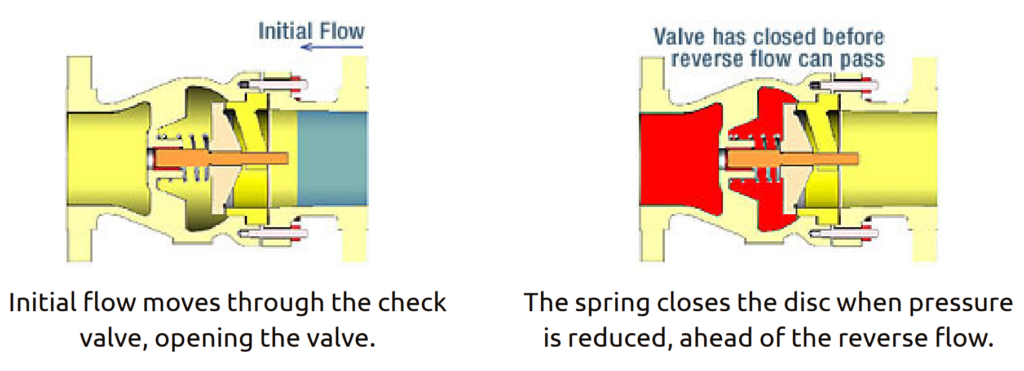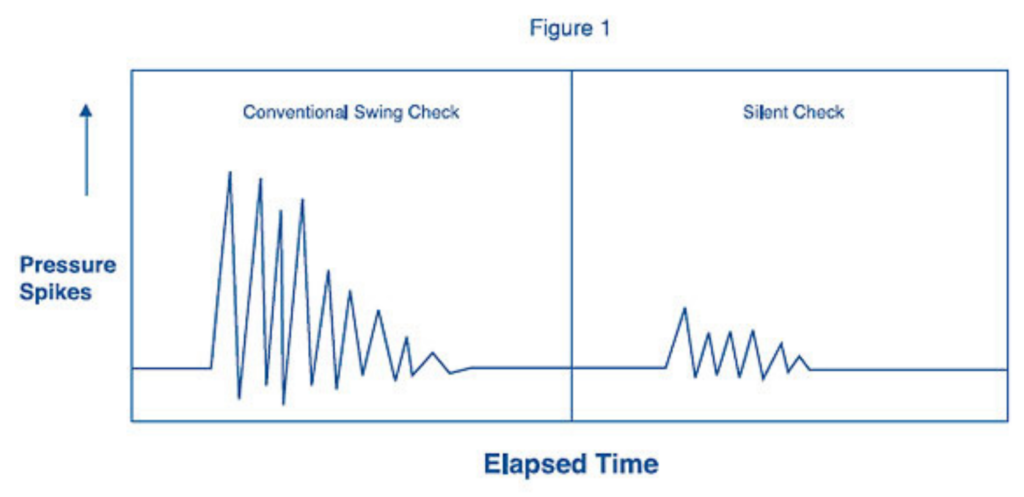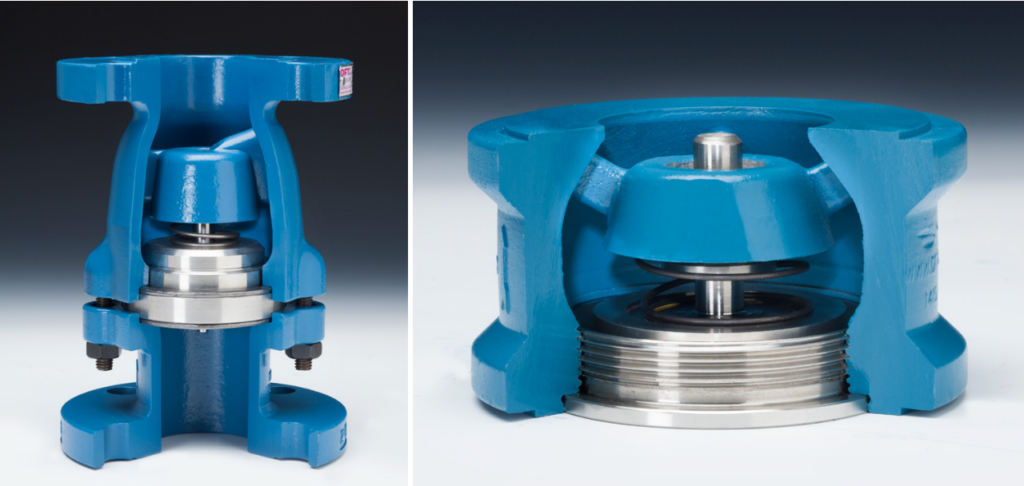Water hammer in pipes is indeed a result of the sudden change in the flow of liquids or steam in a piping system, leading to a high-pressure shockwave. This phenomenon can be caused by various factors, such as the abrupt closure of valves or the sudden stoppage of pumps. The incompressible nature of water is a key factor in the generation and propagation of these shockwaves.
The consequences of water hammer can be significant, including structural damage, noise, vibrations, and potential equipment malfunction. As such, it’s crucial for engineers and operators to be aware of the causes and effects of water hammer and to implement appropriate mitigation techniques to ensure the safe and efficient operation of piping systems.
What is Water Hammer in Pipes?
Water hammer is a common issue encountered in both residential and industrial settings. Its presence is often indicated by a loud thumping or banging sound. In severe cases, water hammer can lead to extensive and costly damage, affecting components such as expansion joints, pressure sensors, flow meters, and even pipe walls.
In residential contexts, water hammer often occurs when actions like taking a shower, washing hands, or running a dishwasher result in sudden changes in water flow. By allowing the flow of water to gradually decrease, rather than coming to an abrupt halt, the risk of water hammer can be reduced or eliminated.
In industrial environments, water hammer can be attributed to factors like improper valve selection, poor valve placement, and inadequate maintenance practices. Some types of valves, including swing check valves, tilting disc checks, and double door check valves, are more susceptible to causing water hammer due to their reliance on flow reversal and backpressure to close. In situations where reverse flow is forceful, such as in vertical lines with upward normal flow, these valves can slam shut with significant force. The resulting shock can damage the valve’s components, leading to inefficiencies or, in more severe cases, causing harm to other system elements.

The localized and sudden pressure changes associated with water hammer can range from minor nuisances to serious operational problems. To prevent or mitigate water hammer, a comprehensive understanding of its causes, consequences, and potential solutions is essential. By taking proactive measures and addressing the root causes, individuals and professionals can effectively manage and minimize the impact of water hammer in their systems.
Hydraulic Shock and the Causes of Water Hammer
Water hammer, often attributed to hydraulic shock, is a phenomenon that frequently occurs due to two primary causes: the rapid closure of a valve and the sudden shutdown of a pump. Understanding the principles behind hydraulic shock is key to grasping this phenomenon.
Hydraulic shock essentially involves a momentary surge in fluid pressure within a piping system when the flow of fluid is abruptly halted. As Sir Isaac Newton famously postulated, an object in motion tends to remain in motion unless acted upon by another force. In this context, the fluid’s momentum as it moves forward within the piping system seeks to maintain its motion. Consequently, when a valve is rapidly closed, the fluid downstream of the valve experiences elastic stretching until its momentum is halted. At this point, the fluid seeks to revert to its normal, unstressed state, analogous to a stretched spring being released. This results in the fluid traveling back through the pipe, encountering the closed valve with potentially destructive force. The audible manifestation of this fluid pressure wave is the characteristic loud bang, often accompanied by multiple pressure pulses.
The force of water hammer hinges on two main factors: the rate of fluid flow when it is brought to a stop and the duration over which this flow is arrested. To illustrate, let’s consider an example: 100 gallons of water flowing through a 2-inch pipe at a velocity of 10 feet per second. When this flow is suddenly halted by a fast-closing valve, the effect is akin to an 835-pound hammer slamming into an obstacle. If the flow is halted within half a second (equivalent to the valve’s closing speed), a pressure spike exceeding 100 psi can be generated.
Water hammer is a particularly significant concern in industrial settings, such as wastewater treatment plants or municipal water systems. In contrast to the scenario described above, the typical bathroom faucet is connected to a ½-inch nominal line with water pressure ranging between 60-80 psi, delivering about 8-10 gallons per minute. In contrast, a 6-inch line within a water treatment plant could transport 900 gallons per minute at a velocity of 10 feet per second. A 24-inch water main might convey over 12,000 gallons of water per minute, sufficient to fill an average backyard swimming pool in under two minutes.

In industrial, water hammer poses substantial risks, making it essential to employ appropriate measures to prevent or mitigate its effects.
3. Effects of Water Hammer
Water hammer, while commonly associated with an audible banging or hammering sound in pipes following the rapid closure of a water source, can lead to a spectrum of outcomes, ranging from minor inconveniences to significant issues:
- Audible Disturbance: One of the most recognizable signs of water hammer is the loud and often startling banging or hammering noise emanating from pipes. This noise is the result of a pressure shock wave encountering a closed valve, joint, or obstruction with considerable force. The noise can be disruptive, causing discomfort or concern, particularly when people are working in close proximity.
- Structural Damage: Beyond the nuisance of the noise, water hammer poses a genuine threat to the integrity of pipelines and associated components. The pressure spikes generated during water hammer can surpass five to ten times the system’s working pressure, subjecting the entire system to immense stress. This can result in leaks at pipe joints, cracks in pipe walls, and deformations in piping support systems. Repairing or replacing these damaged components and equipment can be a costly endeavor.
- Environmental and Safety Hazards: In many instances, water hammer is considered a safety hazard. The extreme pressures generated by water hammer have the potential to blow out gaskets, cause pipes to rupture suddenly, and result in hazardous situations. People in the vicinity of such events can be at risk of serious injury. Moreover, if the spillage leads to environmental contamination, the associated cleanup and remediation costs can be exorbitant.

Addressing the Causes and Conditions of Water Hammer
Efforts to mitigate water hammer often involve the selection of appropriate valve types and designs. Conventional swing check valves, for instance, are prone to pressure spikes caused by reverse flow, as depicted in the first graph. In contrast, the second graph illustrates the effectiveness of a silent check valve, which mitigates pressure spikes by closing before reverse flow can pass through. Proper valve selection and maintenance are crucial steps in minimizing the risks and consequences associated with water hammer.

Effective Solutions for Water Hammer Prevention
Addressing water hammer requires a multifaceted approach, tailored to the specific causes and conditions. Here are several strategies for mitigating the effects of water hammer:
- Operator Training: A fundamental step in minimizing water hammer caused by hydraulic shock is education and training for operators. Properly trained operators understand the significance of correctly opening and closing manual or actuated valves. This awareness is particularly crucial for quarter-turn valves like ball valves, butterfly valves, and plug valves. By exercising caution and following correct procedures, operators can significantly reduce the likelihood of water hammer.
- Water Hammer Arrestors: Water hammer arrestors serve as a vital point of relief for pressure spikes resulting from water hammer. These components are designed to act as shock absorbers within the piping system, diminishing the characteristic noise and mitigating stress on the pipeline. When appropriately sized and installed, water hammer arrestors offer an effective solution for combating water hammer issues.
- Check Valve Considerations: In vertical pipelines, check valves can be a source of water hammer when using swing checks, tilting discs, or double door valves. These traditional check valves can operate in a vertical orientation but are unable to prevent reverse flow effectively. The solution lies in opting for silent check valves designed for vertical installations. Silent check valves, unlike their counterparts, close in response to a decrease in differential pressure across the closure member rather than relying on reverse flow. This makes them far less prone to slamming shut and inducing water hammer. As the differential pressure across the disc approaches the valve’s cracking pressure, the valve gradually closes. This controlled deceleration of fluid flow allows the fluid’s momentum to decrease before the valve reaches full closure, ensuring that the flow does not reverse direction.

By implementing these solutions, individuals and industries can effectively mitigate water hammer, safeguard their pipelines, and reduce the associated risks and costs.
How to Prevent Water Hammer?
To prevent or mitigate water hammer, several techniques can be employed:
a. Surge Tanks
Surge tanks, also known as expansion tanks, are reservoirs installed in the piping system. They absorb excess pressure and provide a cushion to mitigate the effects of water hammer.
b. Water Hammer Arrestors
Water hammer arrestors are devices that incorporate a cushion of air or gas to absorb the shock waves created by water hammer. They are typically installed near valves or other potential water hammer sources.
c. Slow-Closing Valves
Slow-closing valves are designed to close gradually, reducing the velocity of fluid and minimizing the generation of water hammer during valve closure.
d. Proper Pipe Design
Careful consideration of pipe material, diameter, and layout can help reduce the risk of water hammer. The use of flexible materials and gradual changes in pipe direction can help mitigate water hammer effects.
Role of System Design and Expertise in Water Hammer Prevention
System designers play a pivotal role in ensuring the effective management of water hammer within piping systems. To minimize or eliminate water hammer, it is essential to adhere to industry best practices and standards. Here are key considerations:
- Slow-Closing Valves: Selecting the appropriate valve types is critical. Slow-closing valves should be used when appropriate to reduce the risk of water hammer. These valves allow for controlled and gradual closure, minimizing the abrupt flow changes that can trigger water hammer.
- Optimal Valve Locations: The placement of valves within a piping system is crucial. Proper valve locations can help mitigate the effects of water hammer. System designers should carefully consider valve positioning to ensure that potential pressure surges are managed effectively.
- Special Piping Design: In high operating pressure systems, special piping design considerations are necessary. System designers should incorporate features and components that can withstand the demands of high-pressure conditions while minimizing the risk of water hammer.
Well-engineered piping systems are key to reducing the likelihood of water hammer, and in some cases, they can completely eliminate this issue. In existing systems where water hammer has been a concern, several significant steps can be taken to limit its damaging effects:
- Water Hammer Arrestors: Installing water hammer arrestors provides a valuable solution. These devices act as shock absorbers, helping to dissipate pressure spikes and minimize the associated noise and stress on the pipeline.
- Operating Procedures for Quarter Turn Valves: Proper operating procedures for quarter-turn valves are essential. Ensuring a slow closing rate for these valves can significantly reduce the risk of water hammer.
- Relocating Check Valves: In vertical lines, relocating check valves to a more suitable position can prevent water hammer. This adjustment allows for improved flow control and reduced pressure fluctuations.
- Silent Check Valves: Installing silent check valves as a primary defense can be highly effective. These valves, such as those offered by DFT, are designed to operate without inducing water hammer, making them a valuable solution for water hammer mitigation.
For situations where water hammer arises due to pump shutdowns, emergency valve closures, or improperly installed valves, seeking expert guidance is essential. Professionals, like those at DFT Valves, possess the experience and knowledge required to address and resolve even the most complex cases of water hammer. Their specialized solutions can help industries maintain the integrity and safety of their piping systems.